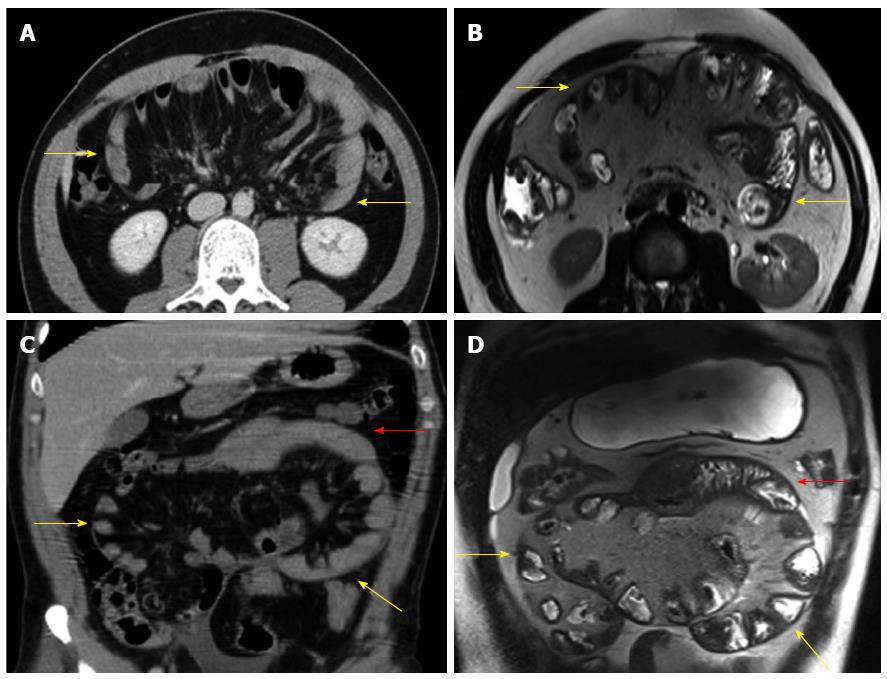Copyright
©The Author(s) 2015.
World J Gastroenterol. Jan 14, 2015; 21(2): 675-687
Published online Jan 14, 2015. doi: 10.3748/wjg.v21.i2.675
Published online Jan 14, 2015. doi: 10.3748/wjg.v21.i2.675
Figure 5 Comparison of diagnostic features on computed tomography and magnetic resonance images[5].
A: Computed tomography scan in the axial plane showing a subtotal conglomeration of small bowel loops coiled in a concertina-like fashion and encased by a thick membrane (yellow arrows); B: T2-weighted magnetic resonance imaging sequence in the axial plane showing bowel loops aggregated in a festoon-like shape and encased by a thick membrane (yellow arrows); C: Computed tomography scan in the coronal plane showing the conglomeration of small bowls loops (yellow arrows); a few free loops are present in the upper quadrant (red arrow); D: T2-weighted magnetic resonance imaging sequence in the coronal plane showing the same conglomerated small bowel loops (yellow arrows) and a few free bowel loops (red arrow).
- Citation: Akbulut S. Accurate definition and management of idiopathic sclerosing encapsulating peritonitis. World J Gastroenterol 2015; 21(2): 675-687
- URL: https://www.wjgnet.com/1007-9327/full/v21/i2/675.htm
- DOI: https://dx.doi.org/10.3748/wjg.v21.i2.675









